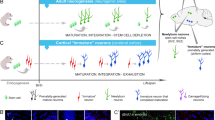Abstract
Olfaction is an ancient sensory system allowing an organism to detect chemicals in its environment. The first step in odor transduction is mediated by binding odorants to olfactory receptors (ORs) which belong to the heptahelical G-protein-coupled receptor (GPCR) superfamily. Mammalian ORs are disposed in clusters on virtually all chromosomes. They are encoded by the largest multigene family (∼1000 members) in the genome of mammals and Caenorhabditis elegans, whereas Drosophila contains only 60 genes. Each OR specifically recognizes a set of odorous molecules that share common molecular features. In mammals, signal transduces through the G-protein-dependent signal pathway in the olfactory sensory neurons that synapse ultimately in the glomeruli of the olfactory bulb, and is finally processed in higher brain structures. The expression of a given OR conditions neuron and glomerulus choices. To date, the processes which monitor OR expression and axon wiring have emerged but are not completely elucidated.
Similar content being viewed by others
Author information
Authors and Affiliations
Corresponding authors
Additional information
Received 9 July 2003; reiceived after revision 3 Ocotober 2003; accepted 22 Ocotober 2003
Rights and permissions
About this article
Cite this article
Gaillard, I., Rouquier, S. & Giorgi, D. Olfactory receptors. CMLS, Cell. Mol. Life Sci. 61, 456–469 (2004). https://doi.org/10.1007/s00018-003-3273-7
Issue Date:
DOI: https://doi.org/10.1007/s00018-003-3273-7




